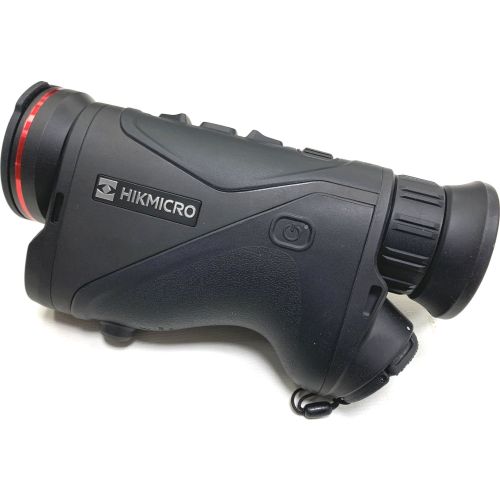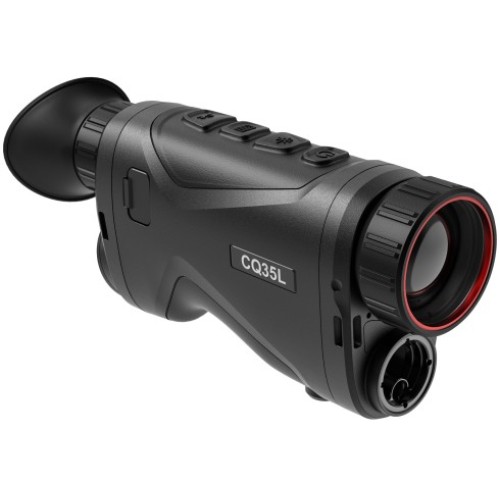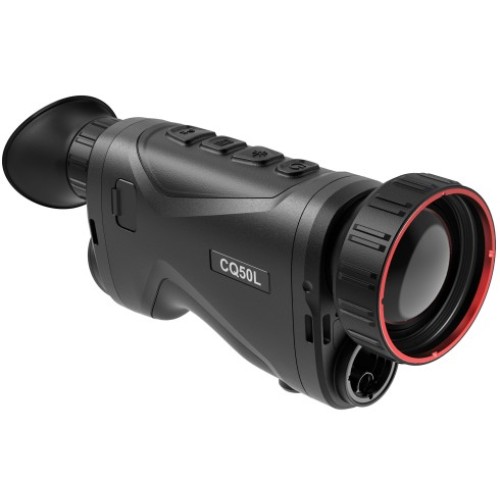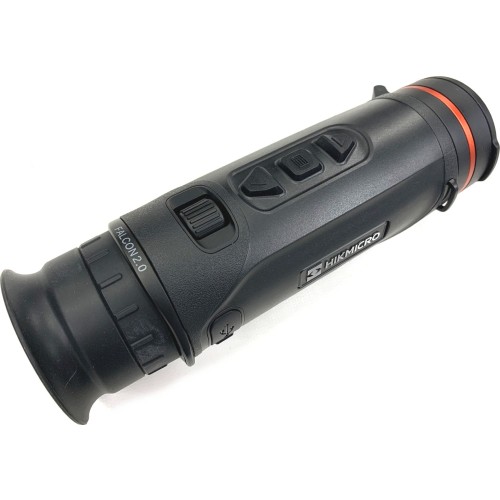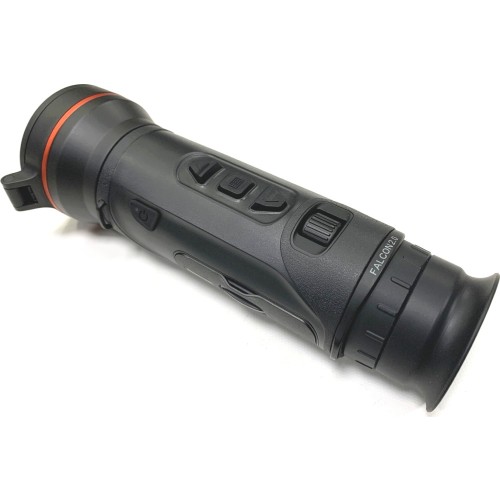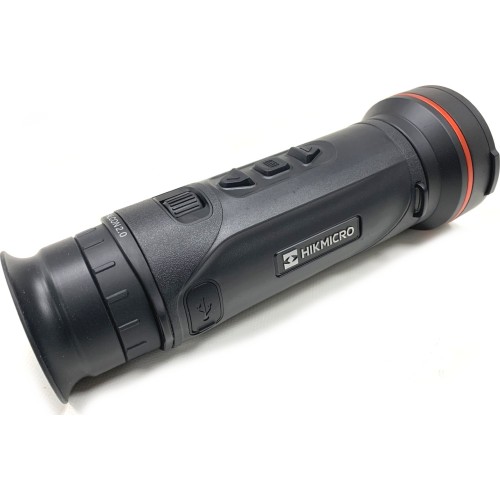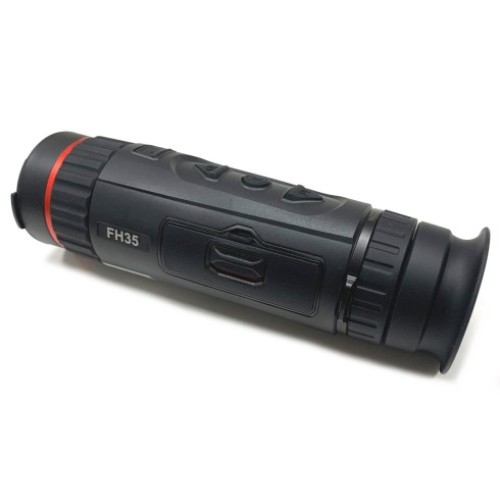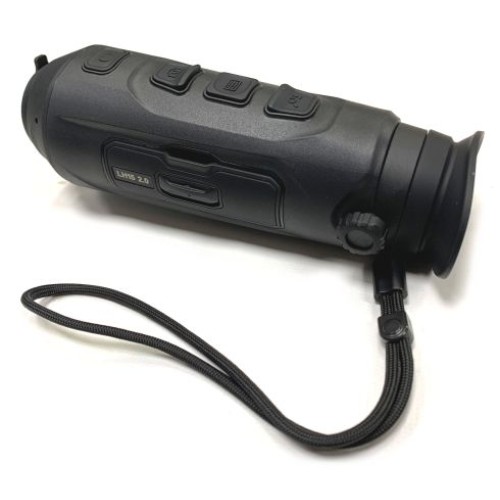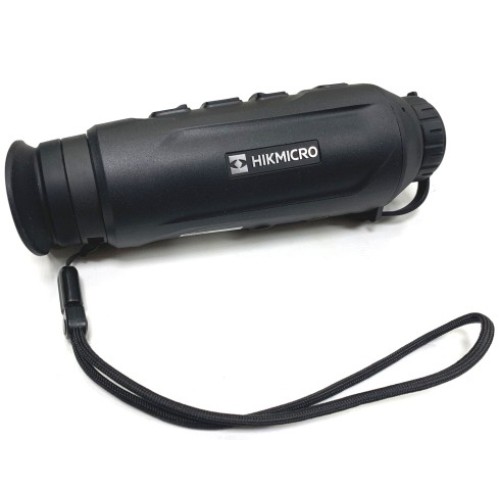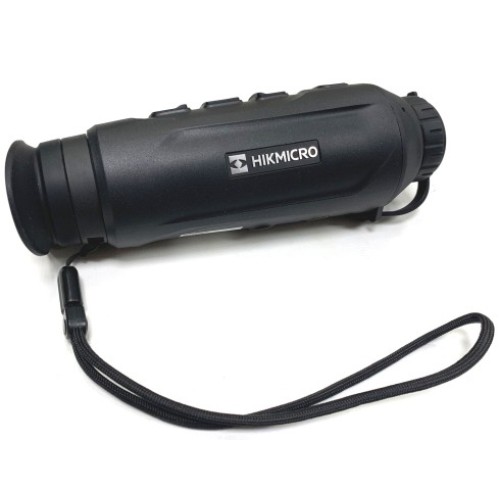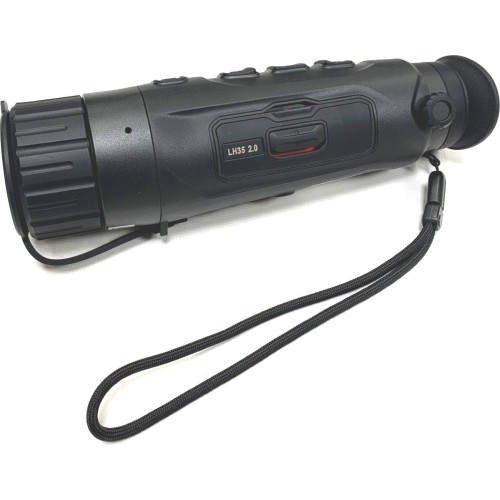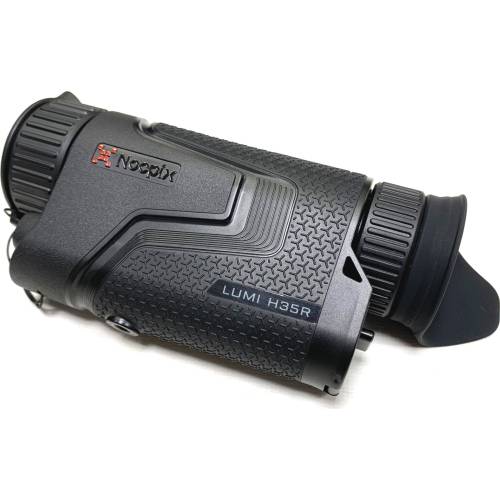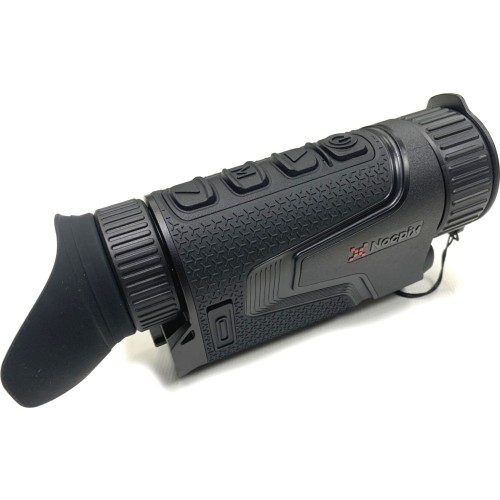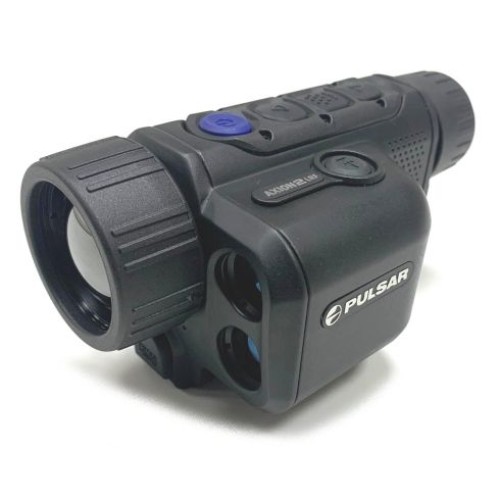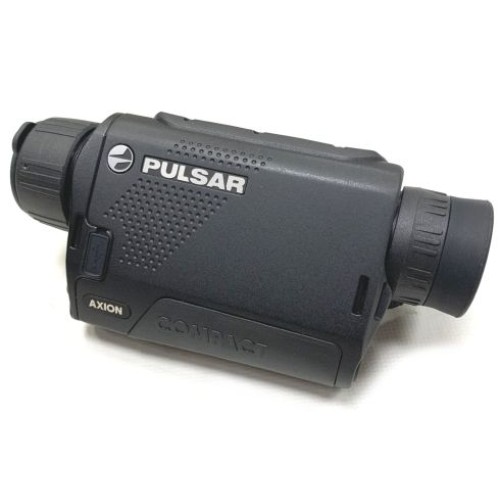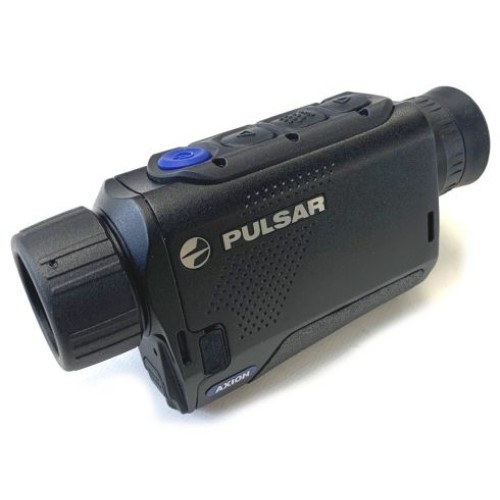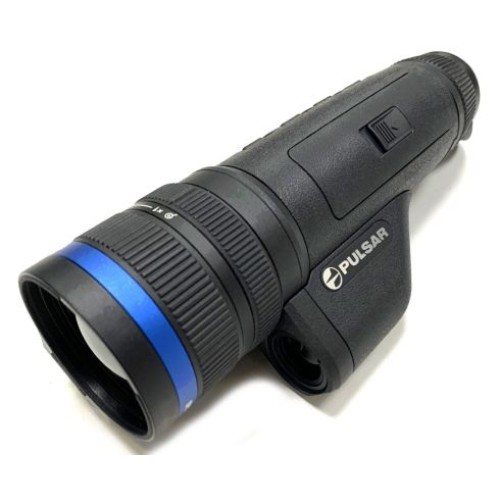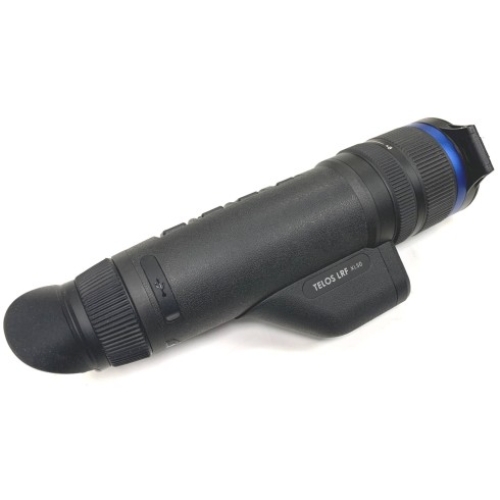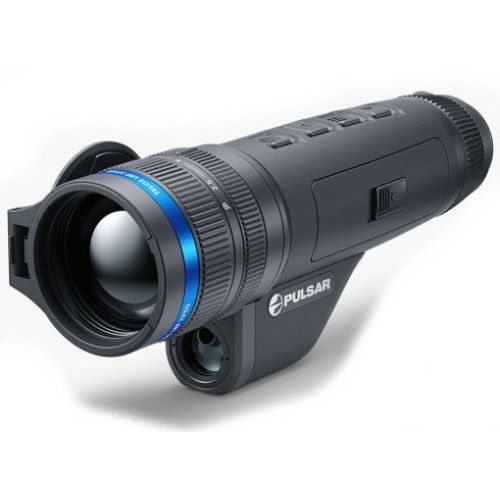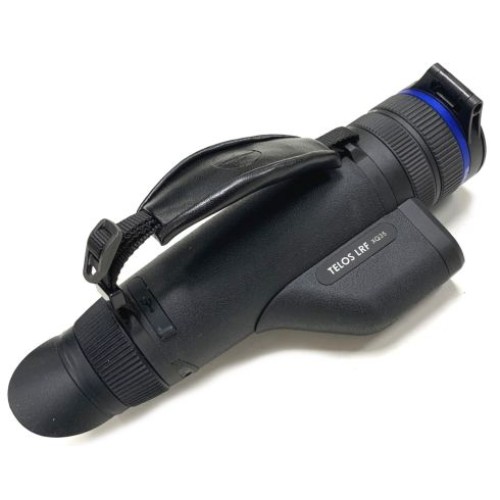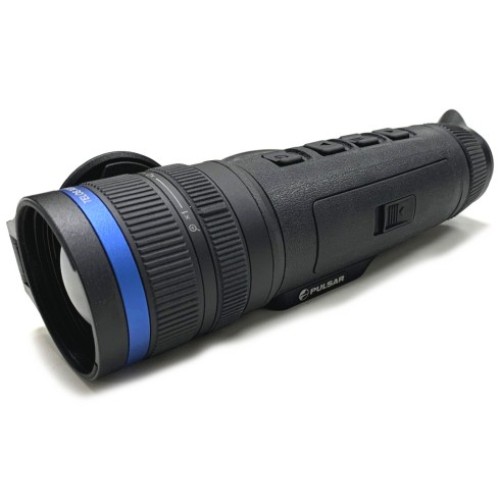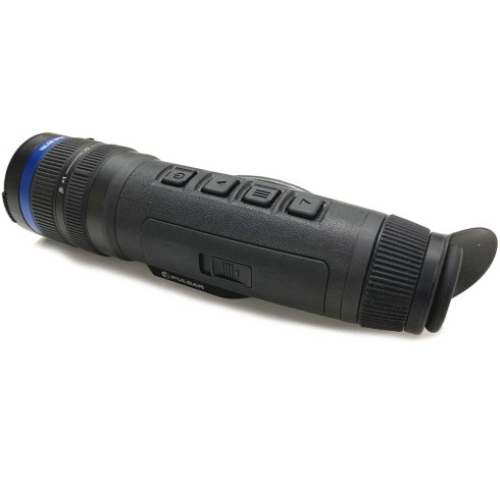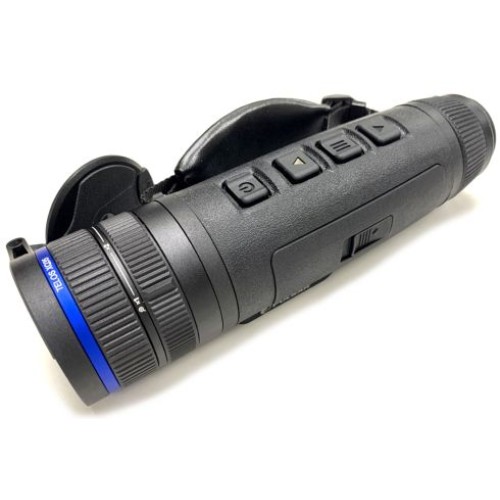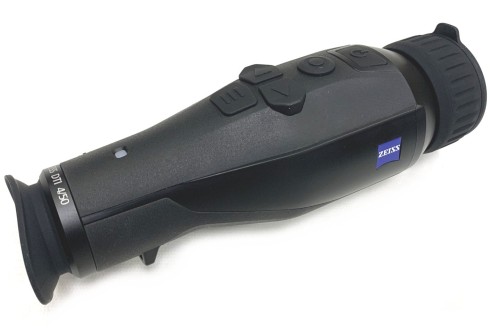Thermal Monoculars
Thermal monoculars often referred to as thermal spotters have become a staple for many hunters. Over the last 10 years they have become affordable and are an invaluable tool when it comes to spotting quarry. Shooters used to examine clearfell and open areas carefully, spending valuable time looking for the twitch of an ear or tail to spot quarry when there was nothing there, with a thermal monocular an area that used to take 30 minutes of careful study can be checked over and disregarded in seconds as everything with a heat source including deer, rabbits, birds, rats and squirrels become instantly visible.
Despite making quarry easier to spot there is still a good level of skill required manoeuvring in to position in order to take a safe effective shot, it is amazing what you can see through a thermal device that you cannot see at all through normal day optics even when you know exactly where the quarry is as it can be screened by bushes and undergrowth making it impossible to place a shot.
Over the years the sensitivity of thermal sensors has increased massively, the size of the thermal sensors have increased, the algorithms that produce the picture we see from the results of thermal sensors have improved and the screens themselves increase in resolution meaning much finer detail can be seen through thermal devices and at higher magnification levels aiding in quarry identification. Many thermal monoculars now also have the option of in-built Laser Range Finder (LRF) enabling the distance to target to be accurately judged so the user knows whether the quarry is within range or if they need to stalk closer to take the shot with confidence.
Pulsar are the market leaders when it comes to thermal monoculars and have held this position for many years as they have produced the best products in the field and their competitors have always been in our opinion significantly behind especially in the terms of boot up time, menu usability, glitches and software problems and interconnectivity with other devices such as your phone which is required when checking and installing software updates, devices can also be paired up and used to view pictures and videos taken on the spotter. Many of Pulsar's competitors have been able to produce spotters which are similar in image quality and performance however the prices have always been similar to those of Pulsar so most have stuck with the best known market leading brand for a better resale value. In the last 12 months however we are seeing a strong contender for Pulsar in the form of HikMicro, their new range of thermal imaging equipment is pushing the boundaries as we know them and is proving to be as reliable as Pulsar with the same image quality, ease of use, quality feel and interconnectivity but at around 75% of the price which when talking about thermal monoculars is quite a saving. Both Pulsar and HikMicro have a 3 year transferable warranty allowing their units to be sold on used with the remainder or the manufacturers warranty ensuring the value of used units under 3 years old is kept up enabling people to upgrade over time without losing too much compared to other technology such as TV's and phones which have next to no value when used.
Thermal technology and the difference between devices can be a little difficult to understand online, it is much easier comparing units in the flesh which is why we advise prospective buyers pop in and look through them in person however there are several aspects that make up the difference in performance between different models and manufacturers. Each manufacturer has their own algorithm that converts the data collected by the thermal sensor into a picture so some models and manufacturers may show on paper that their device has a better sensor and screen than another but in reality the device with the lower specification sensor and screen actually offers a better clarity image and performance in the field. We also find that when a manufacturer is able to increase the performance of their algorithm they usually roll it out in the form of a product update to all of their devices still in warranty so all their compatible units old and new will benefit from this new found increase in performance.
One specification to look out for when comparing different models is the NETD value; the lower this number, the more sensitive the sensor, allowing lower changes in temperature to be detected resulting in a more detailed image. This is especially important in poor weather conditions where there is moisture, mist and fog in the air effectively clouding the reading of the thermal sensor as the temperature differences detected is effectively diluted by the lower temperature of the suspended water in the air limiting the distance and clarity offered by thermal technology in these conditions. The size of the thermal sensor is important as it gives an increased field of view and collects more data to be processed and shown to the user again for a more detailed image to help with identification. The Micron figure is effectively the space between each thermal pixel in the thermal sensor, if two thermal sensors have the same size ie. 640 x 512 but one has a lower micron value then the sensor with a lower micron value would send through more data points for a more complete thermal image which should result in a better definition image provided the algorithm can process this increased level of data quickly and the screen it is displayed upon to the user has sufficient resolution to display this data, this allows thermal monoculars to perform better at slightly higher magnification levels. Screen resolution is also important as there is no point in having the best thermal sensor and a brilliant algorithm if that data cannot then be displayed at its highest resolution to the end user.
Thermal monoculars are not limited to hunting uses, they are also incredibly useful in a range of occupations and other hobbies including electricians, plumbers, roofers, building insulaters, house builders, police, fire services, search and rescue, finding lost pets, bird watching and other animal studies. The applications for thermal technology are far reaching and detecting higher and colder temperatures is useful to many applications from finding bad joints in electrical installations to tracking cold and hot water pipes through walls and under floors, to checking for areas that lack insulation or have air gaps to reduce the thermal efficiency of buildings.
Our best selling thermal monoculars are the Pulsar Axion XQ35 Pro, Pulsar Telos LRF and HikMicro Condor LRF models. The HikMicro Lynx 2.0 is a good entry level thermal monocular that is great for spotting however being entry level it does not show as much detail as top of the range Pulsar Telos and HikMicro Condor thermal images and has a noticeably smaller field of view so you need to scan around a lot more to scan a large area, it is however around half the price of the others. The HikMicro Condor CQ50 LRF offers similar image performance to that of the Pulsar Telos XP50 LRF at over a 25% discount, the Telos is in our opinion the better unit being easier to use with a rotary magnification control next to the parallax focus but it is not easy justifying the difference in price for the slight difference in image performance and ease of use between the two units.
If you have questions or would like any advice on picking the right thermal monocular for you please call us and we can go through the advantages and disadvantages of the models you are interested in to find the right spotter for you.
Sort By:
Filters
Stock Status
In Stock
Out Of Stock
Manufacturer
HikMicro
Nocpix
Pulsar
Zeiss




